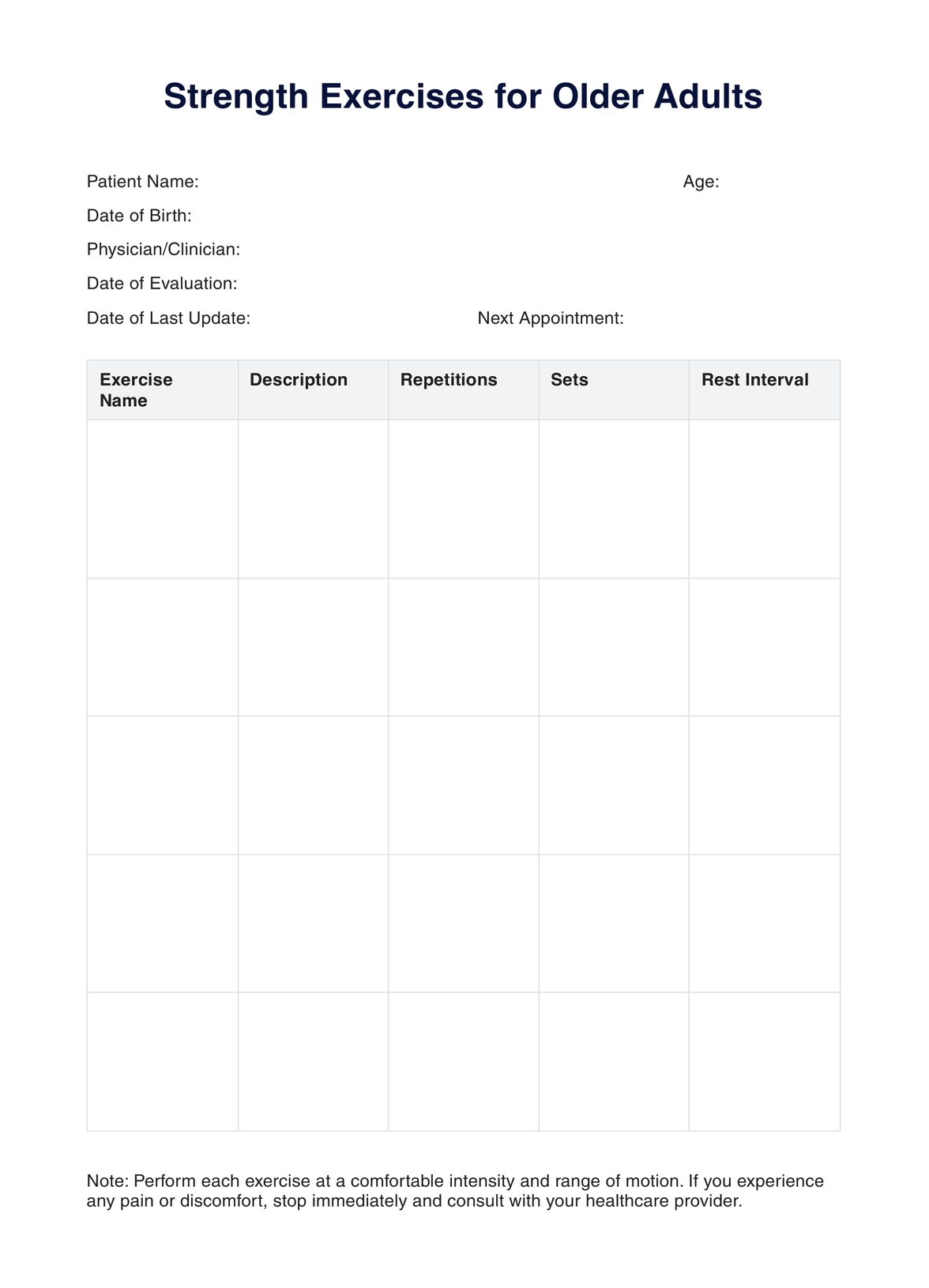Yes, you can modify exercises to accommodate limitations, such as using lighter weights on one side or focusing on unilateral movements like single-leg squats.

Strength Exercises for Older Adults PDF
Improve strength and mobility with our Strength Exercises for Older Adults PDF. Download now for step-by-step guidance tailored for older individuals.
Use Template
Strength Exercises for Older Adults PDF Template
Commonly asked questions
Mild discomfort in the heel may occur initially, but adjusting foot placement or using supportive footwear can alleviate this issue during strength exercises.
Start with a weight that allows you to complete the exercises with proper form and control. Gradually increase the resistance as you become stronger and more comfortable with the movements.
EHR and practice management software
Get started for free
*No credit card required
Free
$0/usd
Unlimited clients
Telehealth
1GB of storage
Client portal text
Automated billing and online payments











